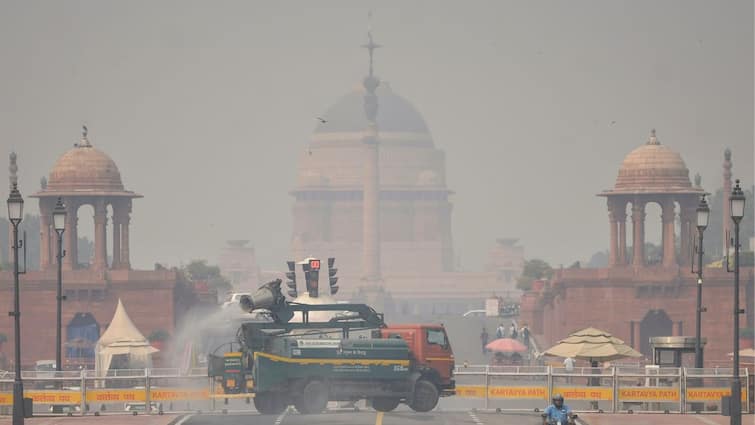
Every winter, Delhi wakes up under a familiar haze, the one that is thick, choking, and predictable. The days following Diwali have once again pushed air quality to hazardous levels, with overflowing hospitals and empty public spaces.
The annual ritual of outrage has begun, followed by the equally familiar cycle of blame towards Punjab’s stubble, Delhi’s vehicles and construction dust, and Uttar Pradesh’s industries. Yet beneath the smog lies a simpler truth: air pollution in the National Capital Region has persisted not because we lack knowledge or intent, but because we have failed to utilise data to drive collective action.
This year, however, presents an extraordinary opportunity. For the first time, both Delhi and the Centre are governed by the same political party. In fact, the alignment extends to NCR cities as well with the same leadership in Uttar Pradesh, Haryana and Rajasthan. This opportunity has the potential to end years of intergovernmental friction that have stalled meaningful progress towards clean air.
For years, the air has been trapped between jurisdictions, the Centre and state governments trading accusations instead of coordinating solutions. But that dynamic no longer holds. With the same political leadership at both levels, Delhi finally has a chance to replace institutional deadlock with joint accountability.
This means rethinking not just crisis response, but governance itself, integrating efforts across NCR states, aligning budgets for clean energy and public transport, and creating a single clean air mission that reports to both governments.
Air pollution does not recognise administrative borders, and neither should the solutions. When the same political leadership controls both tiers of governance, coordination across various ministries from transport and environment to energy and agriculture becomes not only possible but imperative.
What Delhi needs now is a science-led, institutionally coordinated response. India’s premier scientific and technical institutions, the Indian Institutes of Technology (IITs), the National Environmental Engineering Research Institute (NEERI), and the Indian Institute of Tropical Meteorology (IITM) have produced decades of evidence on what works: shifting agricultural practices, improving public transport networks, electrifying mobility, managing construction dust, and enforcing stricter emissions standards. But this science has remained limited to reports and pilot projects. Political alignment must now turn this knowledge into actionable policy, with adequate funding and time-bound, measurable outcomes.
A joint Centre–Delhi Clean Air Mission, backed by scientific expertise and empowered implementation through a multi-stakeholder approach, could be the institutional vehicle we need to make up for past failures in implementing guidelines, the absence of standard operating procedures, and toolkits within the government departments listed under GRAP for short-term and long-term goals. After more than a decade of severe pollution levels, the absence of citizen engagement is a significant miss. Such a mission should unify monitoring systems, pool resources for technology adoption (especially for farm residue management, clean transport and cleaning up of Industrial capacities across the Indo Gangetic Plain), and build local accountability into air quality targets. It must also bring together policy experts, industry leaders, and civic groups to ensure that cleaner air is not treated as a seasonal emergency but as a year-round public health goal.
The conversation must also shift from punishment to prevention. Crop burning, for instance, is a symptom of poor economic alternatives, a problem that demands coordinated subsidies, technology deployment, and market access, not blame. The same principle applies to vehicular and industrial emissions, where coherent policy and consistent enforcement across NCR states can make a measurable difference.
The scientific community in Delhi and the NCR states is eager to collaborate with decision makers and support the politically aligned state of Delhi with the Central ministries in the collective quest for clean air.
This winter, the city has a chance to demonstrate that shared political power can mean shared responsibility. The same-party leadership in both Delhi and the Centre can transform air governance from reactive firefighting to proactive planning, if it chooses to act on science, not merely sentiment. The air may still be grey, but politically, for once, the skies are clear enough to begin.
Atul Goyal is the President of United Residents Joint Action (apex body of Delhi RWAs).
Disclaimer : This story is auto aggregated by a computer programme and has not been created or edited by DOWNTHENEWS. Publisher: abplive.com




